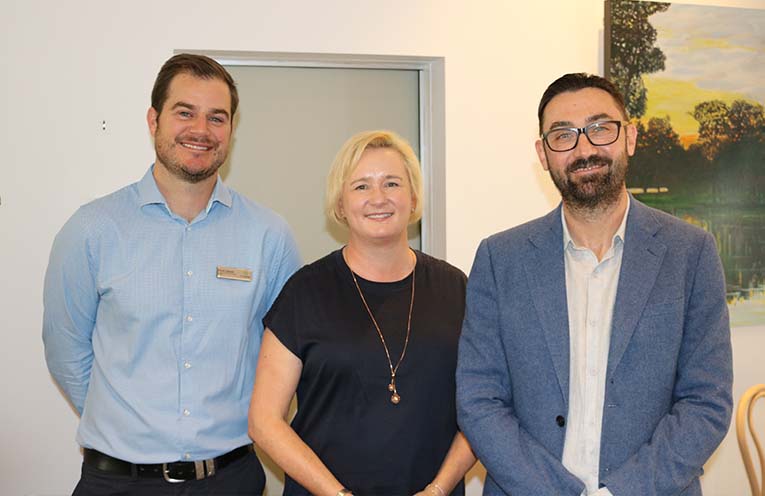
A DIVERSE range of stakeholders, from developers to homelessness advocates, gathered in Medowie last Friday to discuss the ongoing housing crisis being experienced in Port Stephens.
The Port Stephens Housing Forum, hosted by Port Stephens Council at the Greenhouse Eatery, invited key players in the housing space to explore challenges and opportunities around housing supply, diversity, and affordability.
 Advertise with News of The Area today.
Advertise with News of The Area today.It’s worth it for your business.
Message us.
Phone us – (02) 4981 8882.
Email us – media@newsofthearea.com.au
Opening the event, Port Stephens Council’s Community Futures Directorate, Steve Peart, said the discussions would inform the new Port Stephens Housing Strategy, a document “which provides a framework for future housing growth across our towns and suburbs”.
“What we are seeing is house prices rising, rental shortages, and clearly businesses are struggling, particularly in our main tourism areas, to attract a suitable workforce,” Mr Peart said.
“We have predictions around the future of housing across Port Stephens.
“We need 20,000 new beds in 20 years, which equates to about 11,000 new homes in Port Stephens.”
Mr Peart said Council were seeking solutions to “encourage more townhouses and apartments around our town centres” and “encourage developers to invest in a mix of housing types”.
Guest-speaking at the event were GYDE Consulting directors Anna Chubb and Chris O’Dell.
Mr O’Dell’s address highlighted statistics which paint a stark picture of the region’s issues with housing supply, demand and affordability.
“From 2018 to now we have seen the median price of a house in Port Stephens go up by about 45 percent, it is now sitting at about $820,000,” Mr O’Dell said.
The median price of a unit in Nelson Bay is $756,000, up 76 percent from 2018.
“We have seen an enormous increase in the apartment market,” he said.
Council’s last housing strategy was released in 2020, however, as Mr O’Dell stated, a lot has happened since then – including a global pandemic.
“We have seen in the Hunter region this economic growth across the board,” he said.
The Hunter Regional Plan 2041 was also released in 2020, which predicts the Hunter’s population of 860,000 people to increase to nearly 950,000 by 2041 – requiring an additional 101,800 dwellings across the region to meet demand.
In Port Stephens this means an additional 11,100 dwellings.
“The Hunter Regional Plan focuses on the urbanisation of the key centres in the region,” Mr O’Dell said.
Outlined in the plan, the NSW Government has set a target of 80 percent of new dwellings to be built in existing urban areas.
Infill development currently accounts for about 20 percent of development in Port Stephens.
Mr O’Dell also highlighted the influx of migration into the area from the rest of the state, with Port Stephens the eighth highest regional NSW LGA in terms of population increase between 2021-22 and 2022-23.
It is a trend mirrored across the Hunter, with Maitland, Cessnock, Singleton and Dungog all in the top ten.
“Everywhere Port Stephens basically borders is also growing at a rate much faster than the rest of the state.
“The bulk of people coming into Port Stephens are from other parts of the state,” Mr O’Dell said.
Maitland, Lake Macquarie, MidCoast and Central Coast were the LGAs from which the highest numbers of internal migrants arrived during that time.
One in five people moving into the LGA from 2021-22 were the result of overseas migration.
With demand growing, and supply low, land values have responded across Port Stephens, with median land values for residential land rising by as much as 104 percent in some parts of the LGA between July 2020 and July 2022.
According to Valuer General data, median residential land values in Seaham and Wallalong rose by 104 percent, with a 97 percent change in Fingal Bay and 94 percent in Mallabula.
At the other end of the scale, the suburb with the least growth in median residential land values was Swan Bay, at 51 percent.
Residential vacancy rates have also dramatically reduced in the past two years.
At census time in 2021, Port Stephens had a vacancy rate of three percent, down to 1.07 percent in September 2023.
Mr O’Dell said that on 1 November, around 100 properties were available for rent in the Port Stephens LGA.
Rental prices have responded to this demand, with the weekly median rent rising from $432 in September 2020 to $561 in September 2023, a 30 percent increase.
“In the space of three years, rents have gone up by about a third.”
Mr O’Dell also touched on the type of housing stock available to potential renters.
“Four out of five homes are detached.
“65 percent of your housing stock is a detached house with three or four bedrooms.
“Townhouses make up seven percent.
“There is a very limited number of apartments and flats, five percent of your housing stock.
“You have more five bedroom houses than your entire apartment stock.”
Ms Chubb then addressed the audience, highlighting opportunities to create more effective urban areas through planning principles such as the ’15-minute neighbourhood’, a concept promoted in the Hunter Regional Plan 2041 but mired by baseless conspiracy theories in recent times.
“I know there are some conspiracy theorists who think that 15-minute neighbourhoods are about making sure no one ever leaves their suburbs, but it is really about building communities that are liveable, affordable and sustainable.
“This concept is a really important part of our thinking.”
Ms Chubb also spoke of the extensive benefits of infill developments, citing benefits in terms of affordability, sustainability and the environment.
“In Port Stephens, we know how important the environment is,” she said.
“There will be continuing challenges to look at greenfield sites.
“There are actually ways to increase the number of homes in existing urban areas without even doing that much.
“The rest of the world has discovered the wonders of ‘Fonzie Flats’ or granny flats.
“NSW has had the ability to do that in a really seamless way for a number of years now.
“That is the way you can actually increase housing diversity and supply without even noticing it.”
With providing social and affordable housing an issue in NSW for many years, Anna described the Housing Australia Future Fund (HAFF) set up this year by the Federal Government as a “game-changer”.
Over a five-year period, disbursements from the HAFF will be used to support the delivery and availability of 30,000 social and affordable homes around the country.
“It will provide a sustainable and streamlined subsidy for $500 million a year for the next five years.”
Following the guest speakers and a Q and A period, forum attendees engaged in three small-group sessions.
The first focused on housing supply, posing the question: Why should we strive to meet the housing needs of our community?.
Session two explored the opportunities and challenges of greenfield and infill housing.
Session three considered housing diversity, considering how this concept would look in Port Stephens in terms of housing type, density, character and more.
During these sessions, stakeholders agreed upon the need to find a balance between housing affordability and a return on investment for developers.
Attendees also discussed opportunities to develop partnerships to redevelop social housing and government owned land.
Ways to reduce negative perceptions around housing density were also considered, as was the need to define suitable sites for infill housing.
A review of Council’s planning policies was also suggested.
In terms of social housing, meeting attendees agreed providers should be encouraged to redevelop old housing stock.
Social housing or affordable housing targets for developers will also be considered.
Marketing programs aimed at changing the perception of areas not viewed as favourable locations to live or invest were also discussed.
By Doug CONNOR